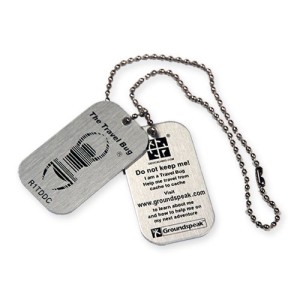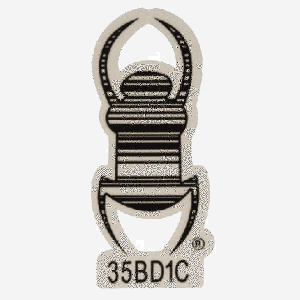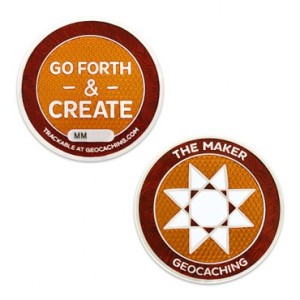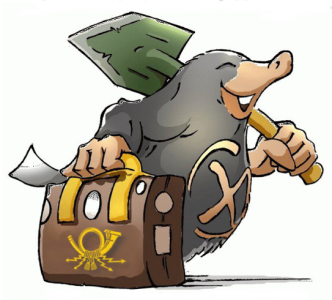 Part of what makes geocaching so fun is getting to explore the world around you and experiencing that thrill when you find the hidden cache. A lot of times, the treasures inside aren’t really anything super exciting—just trinkets and little items. Occasionally, though, you’ll come across a traveling item.
Part of what makes geocaching so fun is getting to explore the world around you and experiencing that thrill when you find the hidden cache. A lot of times, the treasures inside aren’t really anything super exciting—just trinkets and little items. Occasionally, though, you’ll come across a traveling item.
In my opinion, these traveling items are probably one of the cooler parts of geocaching. A traveling item is exactly what it sounds like: an item that has a goal or destination which generally involves traveling (duh). A geocacher’s job when they find a traveling item is to try and help it reach its goal–which might be as vague as traveling “as far as possible” to extremely specific, detailing a certain place it wants to be or even just a set of parameters such as “stay near water.”
But there are at least three different kinds of traveling items and etiquette that geocachers need to be aware of before removing them.
Etiquette
Overall, etiquette for traveling items is pretty basic and mostly common sense. But, I will list them out anyway. The basic etiquette rules are:
1. Always log traveling items when you find them. This includes reporting missing items if a cache says it has one and does not and logging ones that you find but don’t move.
2. If you pick up an item, don’t hang on to it. Their goal is to travel, so try and place it in another cache within 2 weeks. If you cannot do it within a couple of weeks, notify the owner of the item as a courtesy so they know what happened to it.
3. Always be sure you are helping the traveling item complete its goal. If it wants to go south, don’t take it further north. If they ask to post a picture, please do so. If you can’t help an item, then leave it for someone else to grab, log the discovery to let people know it’s still there and move on.
Travel Bugs
 Probably the most common traveling item is a Travel Bug, often abbreviated as “TB” in logs and forums. Travel Bugs are generally items with metal tags that can be purchased on Amazon or on the Groundspeak website. Travel Bug tags have a tracking number stamped on them which should be logged and tracked on geocaching.com.
Probably the most common traveling item is a Travel Bug, often abbreviated as “TB” in logs and forums. Travel Bugs are generally items with metal tags that can be purchased on Amazon or on the Groundspeak website. Travel Bug tags have a tracking number stamped on them which should be logged and tracked on geocaching.com.
If you find a Travel Bug, you don’t have to pick it up if you don’t want to. But regardless if you retrieve it or not, there are a few things that you need to do.
First, write down the tracking number located on the tag. This will let you log it so the owner and other geocachers will know that the bug was found and another step will be listed for the bug’s travels. Go to the Travel Bug Homepage and use the ‘search’ function to find your bug with the serial number. Once you have found it on the site, you can log your find or ‘grab’ it.
Once you have ‘grabbed’ the bug, it will show up in a temporary inventory on your account on Groundspeak. This will allow you to place the bug in another geocache and log it (which will remove it from your inventory) so others know where the bug is and can help it on its way.
Travel Bug Hotels
You may have heard or come across this type of cache. Travel Bug Hotels seem pretty controversial right now, so be careful you don’t upset anyone. Many Travel Bug Hotels have an exchange rule of “take one, leave one.” However, this is quite controversial because travel bugs are supposed to travel. Holding them ‘hostage’ until another takes their place is seen by some as counter to the spirit of Travel Bugs. At the same time, it defeats the point of having a cache specifically for Travel Bugs if no one places Bugs there. It’s sort of a catch-22.
If you come across a Travel Bug Hotel my general advice is to try and exchange them if you can. If you can’t leave one, but know that you can help a bug on its way, I feel like you should go ahead and take it. However, in the interest of respecting the owner of the Hotel, don’t empty the cache. Make sure that you log your bugs when you visit and be sure to check the rules for the Hotel before you visit so you know what is expected and can try to avoid upsetting anyone. It’s meant to be fun, and if people are becoming irate over details, then what’s the point?
Geocoins
 Geocoins work almost exactly the same as Travel Bugs but instead of being attached to an item, this trackable is a stamped coin that travels. Generally, it will have a tracking number stamped or engraved on the coin along with an image or something (as shown to the right). It isn’t always a coin–there are some that are actually flat figures, almost like keychains and the designs are pretty cool and extremely varied.
Geocoins work almost exactly the same as Travel Bugs but instead of being attached to an item, this trackable is a stamped coin that travels. Generally, it will have a tracking number stamped or engraved on the coin along with an image or something (as shown to the right). It isn’t always a coin–there are some that are actually flat figures, almost like keychains and the designs are pretty cool and extremely varied.
Just like a bug, it will have a goal and the same rules and etiquette should be followed. They have their own homepage where you can log and activate Geocoins. They can be purchased on various websites. The homepage linked above has a list of places where you can purchase geocoins with a variety of symbols and designs.
Geokrets
Geokrets are very similar to a Travel Bugs, but they are not affiliated with Groundspeak and should be logged on www.geokrety.org. Geokrets don’t require purchasing a tag; instead you can make your own and attach it to something. Generally, it’s advised to laminate these tags to protect against water and the elements.

Geokret comes from the word ‘geo’ which means earth and ‘krety’ which means mole! The cheerful little guy above is the Geokrety mascot.
You can use Geokrets on many geocaching sites, but it is only partially supported on Geocaching.com, so be sure to read section 6 and 7 on this help page for more information about how to go about that.
Overall, Geokrets have the same basic etiquette and rules as Travel Bugs and Geocoins. The primary difference is that you don’t have to purchase a tag and it isn’t technically supported by geocaching.com, so they won’t take any responsibility or monitor it at all. Geokrety.org does all of that. Also, the types of items you can tag are pretty varied.
Kinds of Geokrets
There are several different kinds of geokrets:
1. Traditional – this is a puppet or an item of some sort, much like the sort of thing you’d see a Travel Bug tag attached to.
2. Book/CD/DVD – when you want to track books, CDs, DVDs dropped to cache containers. Just stick a GeoKret number and a short instructions on the back side of a cover
3. Human – you can use this type of tag to track yourself, their website says. Seems a little odd to me, but hey…whatever works! I suppose this way you could keep an accurate log of your travels for a blog or a journal, which could be neat.
4. A coin – This isn’t a geocoin or anything; just a regular coin (maybe from a foreign country) with a tag.
Making Your Own Traveling Item
When making a traveling item, there are a few things to consider. First, the item needs to be able to withstand the elements. Something fragile or delicate isn’t going to make a good traveling item. Second, it needs to be family friendly. No adult items or knives or anything of that sort. Also, don’t do food (duh). You probably want to make it reasonably small so that it will fit in a geocache without any trouble, and make sure you can attach the tag securely so the two don’t get separated easily. If you are making a Travel Bug, then it might be a good idea to print off the item’s goal to include with the tag so that geocachers can figure out whether or not they can help it along before they get it home.
For Geocoins and Travel Bugs, you can purcahase the tags/coin from Groundspeak’s shop or from various online vendors. Then, go to this site and type in the tracking code in the box labeled ‘activate’ and follow the on-screen instructions to activate the tag.
For Geokrets, you have to make a free account and then register the item on their website. From there it will generate a random tracking code that you can use to keep track of it and generate a tag that you can print off and attach. They also offer QR codes for tracking items which is kind of neat. This great video shows how to do all of that:
Congrats! You now have your own trackable item. Drop it in a cache and log it so people know it’s there and then sit back and see where it goes! Trackable items are a neat way to vicariously travel to distant places, and I highly recommend trying it at least once and helping along any items you come across. Being part of an item’s journey and history is a pretty cool feeling.
